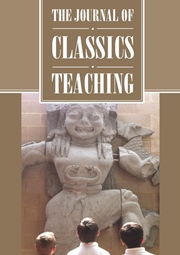William Furley’s Myths, Muses and Mortals: Classical Mythology in the Modern World is an engaging and highly accessible exploration of classical mythology and its enduring relevance. Written with both clarity and warmth, the book is particularly well-suited for students encountering myth for the first time, as well as for teachers seeking an adaptable classroom resource. Furley, a seasoned classicist and educator, organises the book around three broad themes – myths themselves, the creative inspiration they offer, and the human responses they provoke – though these divisions serve more as a gentle guide than a rigid framework. His re-tellings of familiar stories such as Oedipus, Prometheus, and Persephone are vivid and uncluttered, offering clear entry points for classroom discussion. Furley manages to explain complex themes such as fate, hubris, and transformation in ways that resonate with a modern audience without oversimplifying the original material. For students, this provides a firm grasp of narrative structure and symbolic content; for teachers, it allows for straightforward lesson planning and thematic exploration.
Furley’s discussion extends beyond the stories to their afterlives in art, literature, psychology, and philosophy. He shows how ancient myths continue to influence modern thinkers and creators, from Freud to Picasso to contemporary film-makers. This interdisciplinary approach is one of the book’s greatest strengths. Teachers across a range of subjects such as literature, art, philosophy, and even psychology will find useful connections and examples to incorporate into their lessons. By tracing the mythic imagination from Homer and Euripides to modern culture, Furley makes a strong case for the continued relevance of mythology in understanding the human experience. His ability to weave together ancient and modern examples without becoming didactic or overly academic ensures the book remains approachable for students while still intellectually rich.
The book’s tone is one of its greatest assets. Furley avoids jargon and overly technical language, opting instead for prose that is informed, reflective, and often conversational. This makes the book not only readable but inviting. Students are more likely to engage with mythology when it is presented as a dynamic and ongoing cultural dialogue, rather than a static body of knowledge. Teachers can assign chapters individually or as part of a broader unit, thanks to the modular structure. Each chapter is relatively self-contained, which makes the book ideal for a non-linear teaching approach. This is particularly useful for educators looking to supplement broader curricula or highlight specific myths in relation to other topics, such as tragic drama, epic poetry, or gender studies.
In terms of classroom application, Myths, Muses and Mortals offers a wealth of possibilities. Furley frequently raises questions, explicitly, that can serve as launching points for essays, debates, or projects. His exploration of how myths relate to human psychology and societal norms invites students to reflect critically on ancient narratives and their modern counterparts. Teachers could easily design activities around retelling myths from different perspectives, drawing thematic comparisons across stories, or analysing contemporary media through a mythological lens. For example, comparing Prometheus with a modern anti-hero, or exploring the Persephone myth in relation to current discussions around autonomy and consent, provides fertile ground for interdisciplinary inquiry.
However, there are a few limitations to consider. While the book is ideal for general and introductory classroom use, more advanced students or those studying classical languages may find it lacking in direct engagement with primary sources. Furley references original texts but rarely quotes at length or in the original Greek or Latin. As such, instructors of upper-level classical studies courses will likely need to pair the book with source readings. Furthermore, while Furley does touch on gender dynamics and themes of power, some teachers might wish for deeper engagement with feminist, post-colonial, or comparative mythological frameworks. These are not oversights so much as areas where the book’s accessible scope may invite supplementary materials or critical classroom discussions.
Despite these minor critiques, the book excels in demonstrating that myth is not merely a relic of the past but a living force in our culture and imagination. It encourages readers, both student and teacher, to think of themselves as participants in a continuing tradition of storytelling, interpretation, and reinvention. The book supports a broad range of classroom strategies, from traditional lectures and essays to creative projects and cross-disciplinary work. Students can be challenged to explore how myth underpins the narratives of modern novels and films, while teachers can build units that compare ancient themes with current events or personal experiences. This approach fosters not just comprehension, but personal engagement and critical reflection.
In sum, Myths, Muses and Mortals is a valuable and versatile resource for teaching classical mythology in contemporary classrooms. William Furley succeeds in making ancient stories relevant and approachable, without losing their depth or complexity. The book is intellectually stimulating without being intimidating, which makes it an excellent choice for high school and undergraduate settings alike. Its thematic structure, interdisciplinary approach, and accessible tone make it easy to integrate into various curricula, while also encouraging creativity, critical thinking, and meaningful classroom discussion. For teachers looking to breathe new life into classical mythology courses, and for students hoping to understand why these ancient tales still matter, this book is an excellent place to begin.

